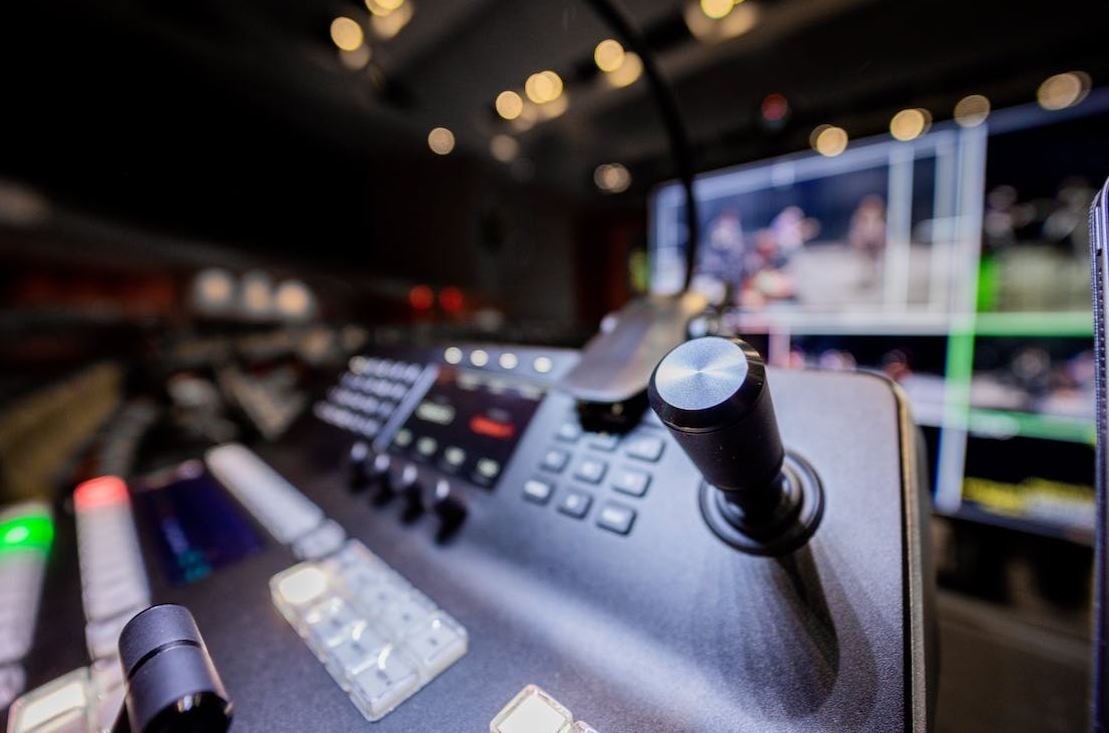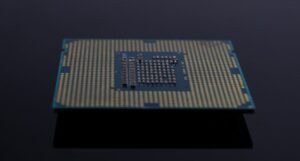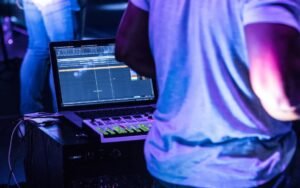How Beats Are Made
Have you ever wondered how those catchy beats are created in your favorite songs? In this article, we will dive into the world of beat production and explore the fascinating process behind making beats.
Key Takeaways:
- Beats are the rhythmic foundation of a song.
- Producers use various techniques and tools to create beats.
- The beat-making process involves composition, sound design, and arranging.
**Beat making** is the art of creating the rhythmic foundation of a song. It involves composing, arranging, and producing the instrumental components that make up the beat. Whether you listen to hip-hop, electronic music, or pop, beats play a vital role in driving the energy and groove of a track.
*Producers use a combination of samples, synthesizers, drum machines, and digital audio workstations (DAWs) to craft their beats.* These tools allow them to manipulate sounds, create unique melodies and rhythms, and add effects to enhance the overall sonic experience.
**Sampling** is a common technique used in beat production, where producers take small portions of existing recordings and incorporate them into their own beats. This allows them to add familiar sounds or melodies to their compositions, creating a sense of familiarity or nostalgia for the listeners.
Beat-Making Process
- **Composition:** Producers start by brainstorming ideas and creating the basic structure of their beats. They come up with melodies, chord progressions, and rhythm patterns that complement the desired style and mood of the track.
- **Sound Design:** This step involves selecting or creating unique sounds and instruments to be used in the beat. Producers may tweak synthesizers, adjust drum samples, or experiment with different effects to achieve the desired sonic quality.
- **Arranging:** Once the basic elements are in place, producers arrange the different sections of the beat, such as the intro, verse, chorus, and bridge. They create transitions, build-ups, and breaks to maintain interest and add dynamic variation to the beat.
*Innovation and experimentation are key elements in beat making. Producers constantly push the boundaries of sound, creating new textures and rhythms that captivate listeners.* They explore different genres, blend styles, and strive to deliver fresh and unique beats that stand out in the music industry.
To give you an idea of the impact and widespread use of beats in music, here are some interesting data points:
| Statistic | Data |
|---|---|
| Number of beat producers worldwide | Over 500,000 |
| Estimated global revenue from beat sales | $1 billion |
*Beat making has evolved significantly over the years, from early drum machines and samplers to the modern digital tools available today.* The accessibility of technology has empowered aspiring producers to create beats from anywhere in the world, democratizing the music production process.
Conclusion:
**Beat making** is a creative and intricate process that involves the composition, sound design, and arrangement of rhythmic elements in a song. It draws on the expertise of talented producers who utilize a variety of tools and techniques to craft unique and captivating beats. The impact of beats in music is undeniable, shaping the way we experience and enjoy songs across different genres.

Common Misconceptions
Misconception 1: Beats are solely created on computers
One common misconception is that beats are only made using computer software and digital tools. While it is true that many producers utilize software like Ableton or FL Studio to create beats, there is a wide range of other methods and equipment used as well.
- Beats can also be made using hardware instruments like drum machines.
- Some producers prefer to create beats using physical instruments like keyboards or guitars, and then sample and manipulate these sounds digitally.
- Sampling from vinyl records and other analog sources is another popular method of beat creation.
Misconception 2: Beats require extensive musical knowledge
Another common misconception is that creating beats requires in-depth musical knowledge and expertise. While having a solid understanding of music theory and composition can certainly enhance the quality of beats, it is not a requirement to get started.
- Many successful beat makers have learned through experimentation and practice rather than formal music education.
- Sometimes, a simple catchy rhythm can be enough to create a compelling beat.
- Collaborating with musicians or using pre-made loops and samples can also be a great way to create beats without a deep knowledge of music theory.
Misconception 3: Beats are only made by professionals
One misconception is that only professional music producers can create beats. In reality, beat making is an accessible art form that anyone can try their hand at, regardless of their level of experience or technical expertise.
- There are a plethora of online resources, tutorials, and software available that make beat making more accessible to beginners.
- With dedication and practice, hobbyist producers can create impressive beats that rival those made by professionals.
- Becoming a successful beat maker often relies on finding your unique style and sound, rather than just technical skill.
Misconception 4: Beats are easy and quick to make
Many people mistakenly believe that creating beats is a simple and quick process. While some beats can be made relatively quickly, creating high-quality and intricate beats often requires a significant amount of time and effort.
- Arranging drum patterns, layering different sounds, and adding effects can be a time-consuming process.
- Creating unique melodies and chord progressions that complement the beat can also be a challenging task.
- The production process often involves repeatedly listening, tweaking, and refining the beat until it sounds just right.
Misconception 5: Beats are only used in hip-hop music
Another common misconception is that beats are exclusively used in hip-hop music. While beats play a significant role in hip-hop, they are also widely used in various other genres and musical styles.
- Electronic music genres like techno, house, and EDM heavily rely on beats as the foundation of their sound.
- Pop music often incorporates catchy beats to drive the rhythm and energy of the song.
- Beats can be found in genres as diverse as rock, R&B, reggae, and even classical music.

What Does a Beat Consist Of?
A beat is the foundation of any song. It consists of various elements such as drums, bass, melodies, and samples. The following table illustrates the components that make up a beat.
| Component | Description |
|---|---|
| Drums | Provide rhythm and percussion |
| Bass | Creates the low-end foundation |
| Melodies | Adds harmonies and catchy hooks |
| Samples | Utilizes recorded snippets for texture |
The Evolution of Beat Production
Over the years, beat production techniques have evolved significantly. This table showcases some notable milestones in the history of beat making.
| Decade | Innovation |
|---|---|
| 1970s | Introduction of drum machines |
| 1980s | Advent of sampling technology |
| 1990s | Popularization of MIDI sequencing |
| 2000s | Rise of digital audio workstations |
The World’s Most Expensive Beat
Believe it or not, beats can have substantial monetary value. The following table features the world’s most expensive beat sales.
| Beat Producer | Artist | Sale Price |
|---|---|---|
| Dr. Dre | Eminem | $1.5 million |
| Pete Rock | JAY-Z | $500,000 |
| Kanye West | Lil Wayne | $250,000 |
Influential Beat Producers
There are several legendary beat producers who have made a significant impact on the music industry. The table below highlights some of these influential figures.
| Producer | Notable Artists |
|---|---|
| Timbaland | Justin Timberlake, Missy Elliott |
| Pharrell Williams | Neptunes, N.E.R.D |
| J Dilla | A Tribe Called Quest, Common |
Popular Beat Making Software
Modern beat producers utilize various software programs to create their masterpieces. Here are some popular beat making software options in the industry.
| Software | Description |
|---|---|
| Ableton Live | Versatile digital audio workstation with live performance capabilities |
| FL Studio | Intuitive music production software with a wide range of features |
| Logic Pro X | Professional-grade software for macOS users |
Influences on Beats
Beats are often shaped by various influences, ranging from different genres to cultural movements. The table below presents some notable influences on beat production.
| Influence | Description |
|---|---|
| Hip Hop | The genre that birthed beat making and influenced countless producers |
| Funk | Known for its infectious grooves and rhythmic elements |
| Electronic Music | Pioneered electronic instruments and experimentation |
Beat Making Techniques
Producers employ various techniques to craft unique beats. This table outlines some popular beat making methods.
| Technique | Description |
|---|---|
| Sampling | Using pre-recorded audio as the foundation |
| Layering | Combining multiple sounds to create depth and texture |
| Chopping | Slicing and rearranging samples for creative patterns |
Beat Production in Different Genres
Beats vary significantly between different music genres. The table below showcases the distinctive beat production techniques in various genres.
| Genre | Beat Characteristics |
|---|---|
| Rock | Heavy emphasis on live drums and guitar riffs |
| EDM | Electronic beats with pulsating rhythms and dynamic drops |
| R&B | Smooth beats with soulful melodies and intricate percussion |
The Impact of Beats on Music
Beats are more than just an aspect of music; they shape entire genres and influence countless artists. This article explored the components of beats, the evolution of beat production, influential figures, techniques, and genre-specific characteristics. With their undeniable impact, beats continue to mold the sonic landscape and captivate listeners worldwide.
Frequently Asked Questions
What is the process of making beats?
The beat-making process involves various steps such as sample selection, drum programming, sound design, arrangement, mixing, and mastering. Each step contributes to the overall creation of a beat.
What are samples and how are they used in beat-making?
Samples are portions of pre-recorded music or sounds that are used to create new compositions. Beat-makers often use samples as the foundation of their beats, manipulating and rearranging them to create unique musical arrangements.
How do beat-makers program drums?
Drum programming involves using software or hardware to create drum patterns and sequences. Beat-makers typically utilize drum machines, samplers, or virtual instruments to program the desired drum sounds and rhythms.
What is sound design in beat-making?
Sound design refers to the process of creating or modifying sounds to fit the mood or style of a beat. Beat-makers manipulate synthesizers, effects processors, and other tools to shape the timbre, tone, and texture of the sounds they use.
What is arrangement in beat-making?
Arrangement involves organizing different elements of a beat, such as samples, drum patterns, melodies, and transitions, into a cohesive structure. It includes creating intros, verses, choruses, bridges, and outros to make a complete musical composition.
What is mixing in beat-making?
Mixing is the process of balancing and blending individual tracks and elements of a beat. Beat-makers adjust levels, add effects, adjust panning, and EQ the various elements to create a polished and well-balanced sound in the final mix.
What is mastering in beat-making?
Mastering is the final step in the beat-making process. It involves enhancing the overall sound quality, ensuring consistency across different playback systems, and preparing the beat for distribution. This is done through techniques like equalization, compression, and stereo enhancement.
What software and tools are commonly used for beat-making?
Some commonly used software and tools for beat-making include digital audio workstations (DAWs) like Ableton Live, FL Studio, and Logic Pro. Virtual instruments, drum machines, MIDI controllers, synthesizers, and audio effects plugins are also frequently used.
What are the key skills required for beat-making?
Key skills for beat-making include being musically inclined, having a good sense of rhythm and timing, sound selection and manipulation abilities, knowledge of music theory, proficiency in using beat-making software and hardware, and understanding the principles of mixing and mastering.
Where can I learn more about beat-making?
There are numerous online tutorials, courses, and resources available to learn beat-making. Websites, YouTube channels, online forums, and music production schools offer valuable educational content and guidance for aspiring beat-makers.
“`
Note: Make sure to replace the texts inside the `




